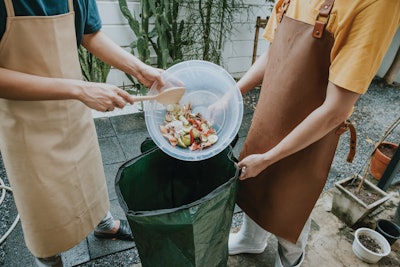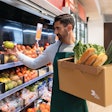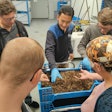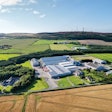
Is feeding food waste to laying hens efficient? A study in Australia sought to answer that very question, and to date, the results would suggest that it is a worthwhile exercise.
Attitudes to using food waste in animal feed vary around the world, with it being banned in some countries and supported in others.
Where there is consensus, however, is that, globally, far too much food is wasted. Some estimates put the figure as high as US$1 trillion each year.
In Australia, approximately 7.3 million metric tons of food waste is disposed of in landfill each year, which costs the Australian economy more than US$14 billion.
The study, carried out by the University of New England (UNE), in conjunction with Food Recycle Ltd, which has developed a process that converts commercial food waste into animal feeds, and PoultryHub Australia, which supports research and training, looked at feeding laying hens with a waste-based diet using discarded food scraps from businesses such as breweries, hospitals, nursing homes and hospitality venues. The waste was turned into granular powder suitable for feeding to poultry.
The study looked at three dietary treatments: a commercial diet, a purely food waste diet and a 50:50 blend of the two.
Hens given the food waste diets had similar egg weight, hen day egg production and egg mass, but lower feed intake and higher feed efficiency, compared to those fed the control diets.
Hens fed the food waste diets exhibited lower shell breaking strength and shell thickness at week 34 and higher yolk color score and higher fat digestibility compared to the control treatment at week 43.
While feeding the recycled food waste-based feed maintained egg production while improving feed efficiency, compared to the control diet, further study is needed to determine nutrient digestibility, calcium and phosphate availability and optimal participle size. The economic efficiency of feeding food waste-based diets will also need to be carefully examined to allow a precise formulation to optimize them for commercial use.
Additionally, the researchers note, examining the effects of feeding food waste-based diets on the organoleptic properties will be crucial to facilitating the adoption by the poultry industry of food waste-based feed.
Feeding hens the waste-based diet resulted in no impact on health or welfare.
Responding to demand for sustainability
Dr. Thi Hiep Dao, Postdoctoral Research Fellow at UNE and one of the study’s leads, commented that recycling food waste could be beneficial both financially and for the environment.
She said: “Recycling food waste into poultry feed will help famers to save on feed costs, generate significant improvements in feed efficiency, reduce the environmental impact of poultry production and assist the Australian poultry industry to meet the growing demand for more sustainable and low-carbon poultry production."
She continued that the rising cost of commodities, such as soybean meal, paired with increasing demand for low-carbon poultry products, has put immense pressure on the poultry industry to explore alternative feed ingredients.
In Australia, about 65% of poultry production costs are from feed. The low cost of commercial food waste, paired with the fact that it can be sourced locally, could have the potential to cut current feed costs in half.
Diverting this waste into a cheap and sustainable feed option would lower greenhouse gas emissions created by producing eggs and chicken meat by 76% and 25%, respectively, the researchers note.

















